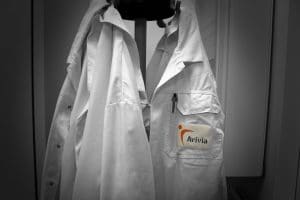Home » Lab Capabilities » Dissolution Methods » Dissolution Method Development

Dissolution Method Development
Teamwork
At Avivia we work in small multidisciplinary pharmaceutical expert teams. This allows the analytical researcher to be directly involved in the process of formulation development and interact with clinical R&D.
This way of working is essential for effective dissolution method development. In this setting, dissolution method development will be more successful and significantly more important information can be derived from each dissolution test.
Educated observations made by the researcher during, and at the end of the dissolution test, provide extremely valuable additional data about disintegration, hydration, swelling, erosion, particles size, granulation and coating properties, floating, cone formation, sticking, etc.
Discussing these dissolution observations during interactions with the pharmaceutical developer, offers extremely important additional guidance in the evaluation of dissolution profiles, release mechanisms, excipient performance, formulation composition, setting process parameters and to fine-tune the dissolution method itself.
Preferably, (pre)clinical data will be evaluated, discussed and used to support dissolution method development and adjust or validate dissolution method(s).

Avivia is an independent pharmaceutical development contracting organization in the Netherlands offering a unique, complementary range of pharmaceutical services in the areas of:

Dissolution Method Development
In dissolution method development, information from different disciplines in the team is collected, combined and processed into dissolution methods:
Active pharmaceutical ingredient (API): dose, morphological form, wetting, particle size, intrinsic solubility, hydrophobicity, pKa, etc.
Excipients: function, properties, type, grade, particle size, etc.
Pharmaceutical process type: blending, granulation, drying, tableting, coating, etc.
Process variables: adding, speed, time, temperature, solvent, compression force, spraying time, etc.
Time release technology: delayed release, extended release, immediate release, timed release, etc.
Route of administration: oral, buccal, sublingual, rectal, injection, etc.
Pharmacokinetic properties: absorption, distribution, metabolism, excretion
Clinical study program: fasted, fed, timing, volumes, etc.
To link all this information together, extract the critical parameters and translate this to a relatively simple in-vitro test, requires extensive knowledge about the different disciplines involved.
Years of experience help us in selecting the most appropriate dissolution technique, method parameters and dissolution media to come to a selective bio-relevant set of dissolution methods.
Ultimately, from knowledge, a suitable discriminatory QC release method will be extracted and selected.
Dissolution Equipment
To facilitate dissolution method development a complementary range of dissolution testing equipment is available within the Avivia dissolution laboratory:
• USP apparatus 1 / Basket dissolution apparatus
• USP apparatus 2 / Paddle dissolution apparatus
• USP apparatus 3 / Reciprocating cylinder dissolution apparatus / BioDis
• USP apparatus 4 / Flow through cell dissolution apparatus
• Pion µDiss Profiler (low volume in situ fiber optic UV monitoring dissolution and solubility system)
We know from experience what the strengths are of each technique, and how we can best apply them to highlight and optimize the most relevant properties of each formulation.
If desired, other less common or more academic dissolution testing techniques are accessible in our network, or we design a tailor-made dissolution setup with, for example, glass fiber optic probes and semi permeable membranes.
Dissolution methods for development and product release
To support formulation development, one or more solution methods are often developed that act as a bio-relevant model to predict in vivo product performance. These methods are designed using product prototypes with variations in formulation-specific critical parameters, and preferably optimized using data from pilot clinical studies. The predictive dissolution methods used in the development stage may require the use of advanced dissolution testers such as USP apparatus III or IV and complex dissolution media.
However, for product release in the GMP phase it is desirable to run one standard discriminating dissolution test on common devices like USP apparatus I or II. So where possible, the R&D methods are converted into one simplified QC product release method.
Avivia has experience in converting complex R&D dissolution methods to more QC friendly product release dissolution methods that uses USP apparatus I or II.



